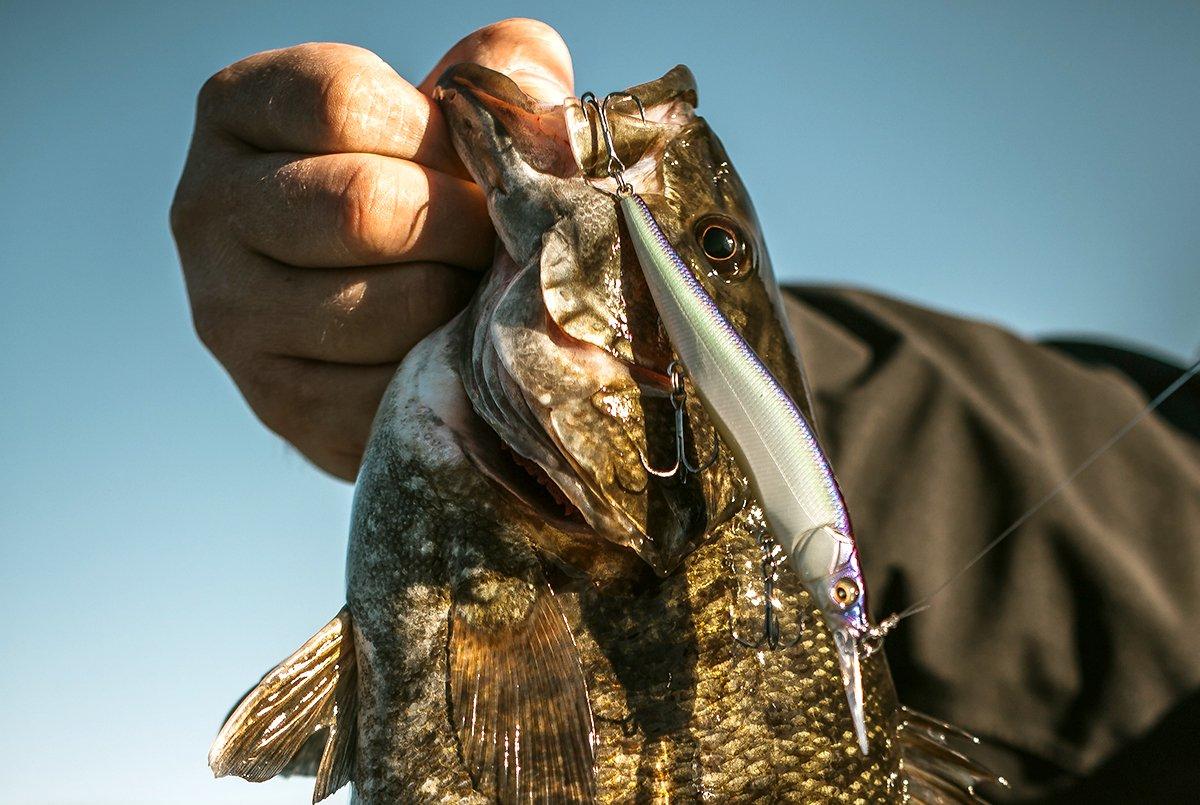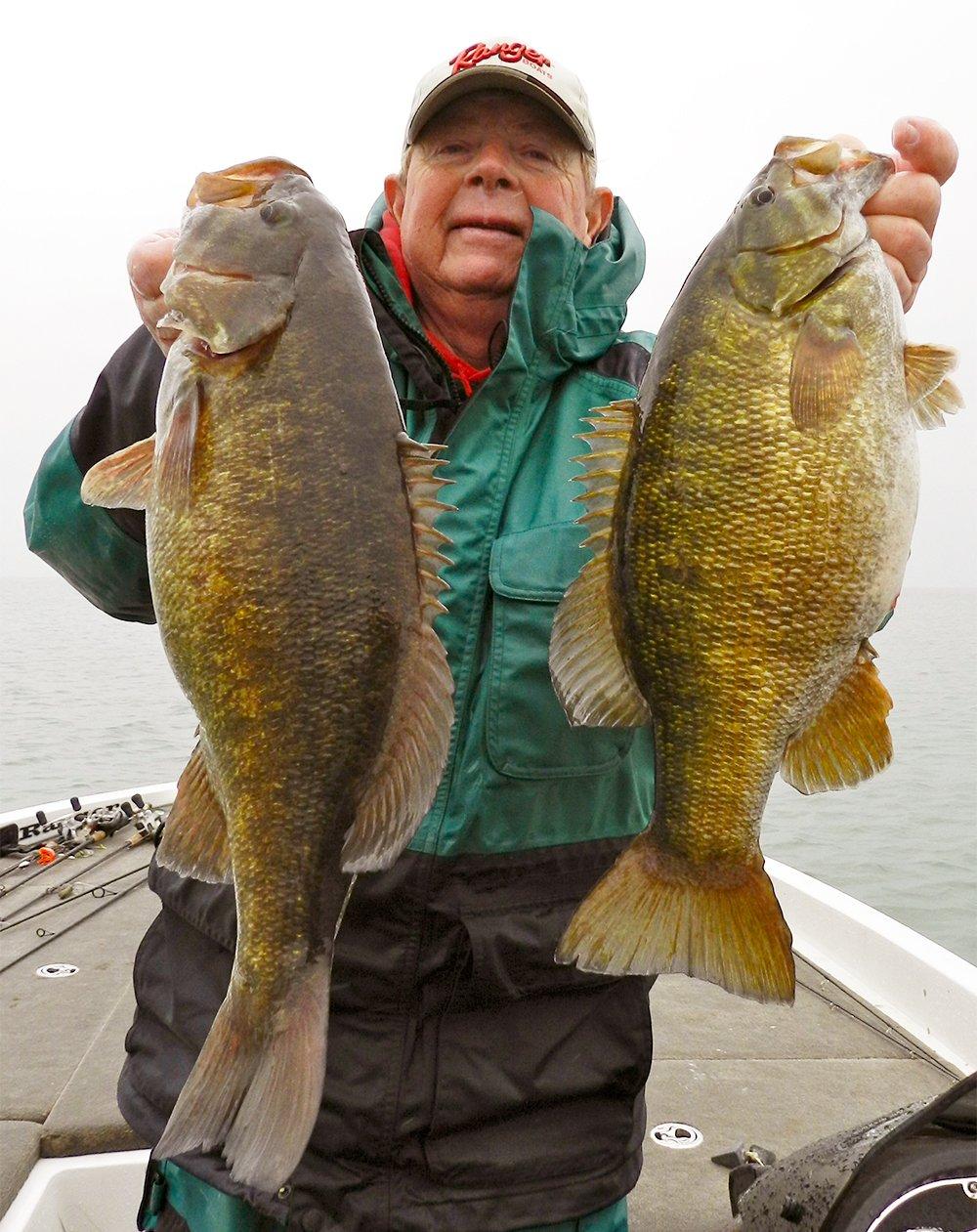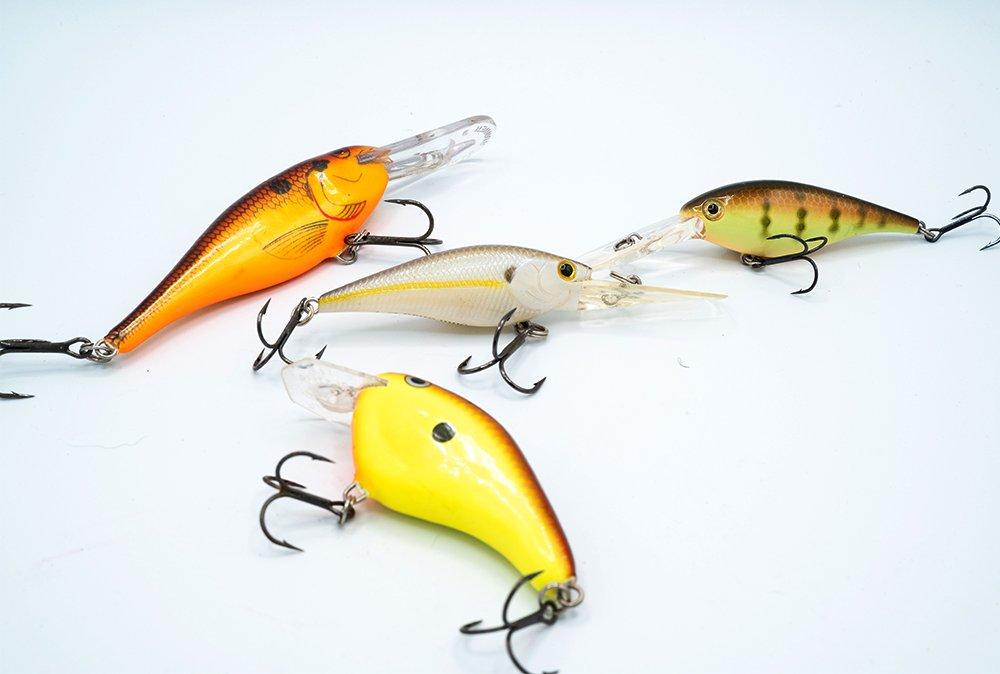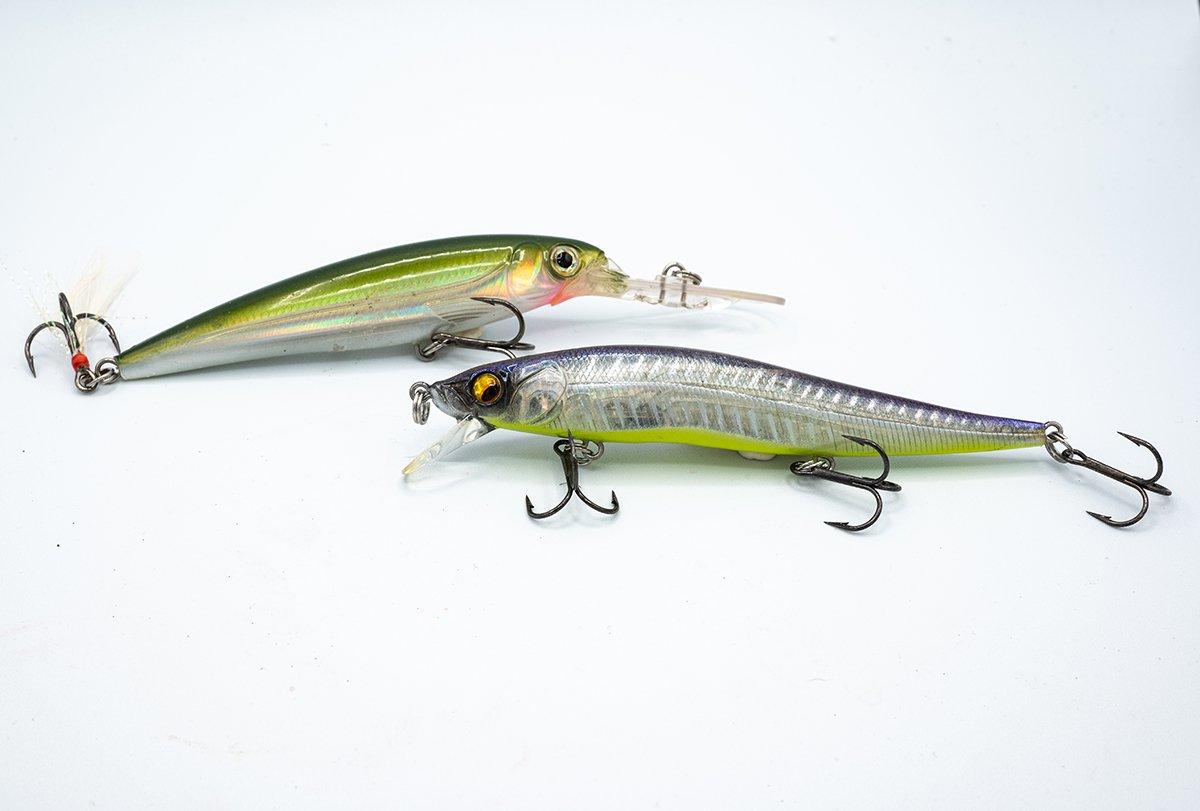Like a lot of folks, I moved to the South to get away from the cold. Living in Florida gives me the opportunity to fish whenever I want, and that’s quite a bit. But I spent the first half of my life in the Midwest, so cold-water fishing was with me for 40 years.
At first, my efforts were just an example of forcing the issue. After waiting several months to get out there, early March found me flailing away on my local waters with little to show for my efforts. Bass don’t bite in ultra-cold water anyway, I was told. But I can still remember the farm pond experience that changed my view of the world. Water temperatures hovering in the mid-30s, with ice still holding on the south shore. I assumed I was in for another pointless day of angling. But a familiar thump on the other end of my line convinced me otherwise. The 2-pound largemouth was joined by another, and then another, on successive casts to my new favorite fishing hole.
Fast-forward a couple decades, and I’d been successful chasing both brown and green bass in water so cold my companions and I often had to break ice to get to them. Some of my best days fishing for Great Lakes smallmouths came in this range. If you’re like me, you’re ready to get out there, regardless of what the calendar says. If you’re after bass in a northern clime, here’s how to succeed.
(Don’t Miss: 3 Best Lures for Catching a 10-Pound Bass)
Know Your Quarry
Bass, like all freshwater fish, are cold-blooded creatures. Everything in their world revolves around temperature. Their body temperature and activity level directly correspond to their surroundings. While it may be hard for us to grasp the importance of this in our fishing, understand that a single degree of increased water temperature can be a big deal to fish in the early spring.
So our first step when searching for ice-out bass should be to find the warmest water. Once the sun and wind hit open areas for a few days, the shallows warm up quick. Look at the coves on the northern side of your fishing hole — they get the most sunlight this time of year — and begin your search on shorelines with dark bottoms. When looking for largemouth bass, check bays that are often weed-choked in summer. Chunk-rock shorelines, correspondingly, attract smallies.
In any case, it’s all about the warming factor. Objects that absorb heat help. Floating boat docks are bass magnets in the spring. So are dock pilings and sea walls. Riprap banks, like those along most dams, are great places to spend an afternoon. And, in the event that a warm spring rain is in the works, rush to any culverts or feeder creeks once they begin to empty. Be sure your boat has a temperature gauge of some sort (almost every modern depth-finder includes this feature) and keep your eye on it when moving from spot to spot. Never overlook the importance of a slight change.
One more thing, regarding fishing spots. Early spring brings a migration of fish to the shallows, but they don’t show up haphazardly. Like all animals in nature, bass follow a route, and they prefer edges. They’ll move from the deepest basins to the protected coves, but they often do so along a creek channel or by sliding up a long point. Find the route of the bass, and you’ll be able to follow along.
(Don’t Miss: Is It OK to Eat Bass?)
Tweak Your Tackle
By now, you should have had plenty of time to get things in order. Gear organized and reels cleaned and oiled, you’re ready to lay things out for the first trip of the year. Let’s start with line, as it may be the most important consideration in your ice-out arsenal.
Ultra-cold water calls for finesse, especially in the fishing line category. This is simply not the time for goat rope or braid. Fluorocarbon rules, for good reason. Coming off a period of ice cover, most lakes are very clear in early spring. Even those muddied by recent rains call for a light-handed approach, due to the inactivity of the bass. In each case, thin line simply gets more bites.
Spool 8- to 10-pound test on your spinning gear, and 12- and 14- on baitcasters. Choose rods with moderate power that are able to cast light baits. If air temps hover around freezing, a can of WD-40 can save the day when you touch up rod guides to prevent ice from forming.
(Don’t Miss: Why You Suck at Throwing a Baitcaster)
Staple Baits
One nice thing about fishing at ice-out is the small number of lures required. I’ve always enjoyed such periods, when the buzz of modern bass fishing is quieted and the tried-and-true tactics take center stage. While some modern inventions can play, many of the best cold-water bass baits are as old as the sport itself.
The jig-and-trailer defines such. Originally tipped with pork rind (jig-n-pig), today’s anglers tip with plastic (jig-n-chunk or jig-n-craw) to serve the same purpose. A rubber-skirted jig closely resembles a crawfish, and is gobbled up by all species of bass. Weedless construction makes jigs the most effective early spring lure for fishing around brush and boat docks. In extremely cold water, it’s best to go with smaller lures than standard flipping jigs. Those weighing in around 1/4-ounce, often labeled finesse or bitsy, will outproduce the big, bulky summertime models. Tip accordingly with minute trailers, and fish with more drags and pauses than drastic hops.
Speaking of old-school, the blade bait has been catching bass for 70 years, and it continues to be one of the most effective lures for frigid water. Readers will recognize the Silver Buddy as an early version; today a number of manufacturers make blade baits (though The Buddy still works just as well). Blade baits mimic dying baitfish, and they work equally well from Canada to Tennessee in early spring, for all species of bass. Fish them on outside weedlines in natural lakes for largemouths, around bridges for spotted bass, and on channel swings and points for reservoir smallmouths. The key to fishing a blade bait is not to overwork the lure. Small, short hops maintaining bottom contact are always best. I stand by a simple rule: when hopping the lure, as soon as you feel the vibration, set it back down on the bottom. Fish blade baits on casting gear and 12-pound line for best feel and results.
Crankbaits work surprisingly well in cold water, especially during a warming trend. Well, some crankbaits. I’ve always been amazed at how some lures are so effective in this scenario, while others fail to get bit. When choosing a crank, go with a tight wiggling, subtle model. Flat-sided crankbaits outproduce hard wobbling, round-bodies and square bills. The original Rapala Shad Rap is a killer, but not the only choice. Sometimes it takes a bit of experimenting, rooting through the crankbait box to find an effective lure. Again, keep line light and retrieves subtle and slow, with lots of pauses and stops.
Jerkbaits can be thought of as crankbaits full of stops. Often used as trolling lures for other fish, bass anglers fish jerkbaits as the name implies, with quick, snappy jerks of the rod, darting the bait back and forth, triggering aggressive strikes in cat-and-mouse fashion. Jerkbaits are great lures fished this way in warm water, but equally effective when fished slowly in spring.
Today’s jerkbaits are almost all suspenders, meaning the lure hovers in front of the bass when paused. This is the single most important factor in early spring jerkbaits. Anglers in the know will often pause the lure for painful periods during the retrieve, keeping the bait perfectly still for up to a minute. Eventually, the bait gets crushed by a bass that can’t stand it.
Try jerkbaits on wind-blown points on warm days, or in the mouths of pockets on cold, still mornings. If you’re fishing by baitfish in early spring, especially shad, often subjected to die-off, a jerkbait is the lure to throw.
Don’t believe the hype. Bass are very catchable in cold water, especially during warming trends. Like you, they’re sick of winter and ready to get things rolling. With a supply of recommended baits and a light touch, you’re well on your way to the first bass of the year.



















































